Since the CPC Central Committee proposed the national energy strategy of building a "new energy-dominant new-model power system", in the energy industry, different ideas have been blooming. Industry experts have analyzed what a new-model power system is from the perspectives of their own specialist areas. The focus of the debate is: how to reconstruct the physical form and institutional mechanism of the power system in response to the explosive growth of new energy. Although there are currently many problems yet to be solved, the most urgent and critical problem stands out; how to solve the problem of power balance on a larger scale and through longer cycles. At present, electrochemistry can only offer storage in terms of hours, rather than days, months, or quarters over a longer time span.
This article discusses potential ways to promote the construction of new-model power systems with high quality, from the perspective of energy economics. First, the distribution of new energy should utilize existing transmission systems as much as possible to minimize the investment and operating costs of new power systems. Second, the space of the existing thermal power generation bases should be utilized as much as possible to enable the reuse of the power grid and land resources. Third, various advantages of electricity and hydrogen energy should be brought into play. Transportation of electric energy is low-cost, safe and reliable in comparison. However electricity is not suitable for large-scale storage. Hydrogen energy has high energy density, and the electric hydrogen production technology is relatively mature, making hydrogen a feasible carrier of electric energy storage. In many steelmaking, chemical, and transportation industries, hydrogen has broad application prospects. However, its transportation cost is high, and related technology is immature, making it prone to safety accidents. Not to mention that it is highly volatile. Fourth, priority should be given to the use of new energy power generation to enhance the re-electrification of terminal energy. The volatility of new energy power generation should be solved through the energy storage method of "using electricity to produce hydrogen and hydrogen to regenerate electricity". Internationally, hydrogen energy has been used as a seasonal storage for electric energy. Fifth, considering the inverse distribution of China’s new energy resources and water resources, we should make full use of the existing high-voltage transmission technology to realize west-to-east power transmission, produce hydrogen and regenerate electricity at the existing thermal power plant bases, and recycle water resources. Sixth, electricity and hydrogen energy should be integrated and developed to achieve interconnection, complementarity, and mutual benefit. Based on the principles laid out above, this article proposes a strategy for a new-model power system that focuses on new energy, grid distribution, and integration of electricity and hydrogen. The main aspects of the concept are elaborated as follows.

Figure: Use mature transmission and distribution networks as the carrier of new energy transmission
The mature transmission and distribution network will be used as the carrier of new energy transmission to realize the aggregation, transmission, and distribution of new energy. When there is a surplus of new energy, "green power hydrogen production" is carried out at the location of the existing thermal power plant. When there is insufficient new energy power generation, "hydrogen regeneration" is used to ease power balance on a long-term scale. At the same time, the green hydrogen obtained can also meet the demand for hydrogen in industries such as steel and chemical industries. This concept involves not only large-scale energy storage in the form of hydrogen energy, but also widespread application of hydrogen energy, and realizes the integrated development of electricity and hydrogen. The feasibility analyses are as follows.
"Maintaining electricity dominance and integrating electricity and hydrogen" is the principle behind the construction of the physical form of the new-model power system. Electric energy and hydrogen energy are both the cleanest energy sources. Electric energy comes from new energy sources, and hydrogen also comes from the conversion of new energy sources. The two form a mutually supportive relationship. The technology of electric energy generation, transmission and distribution is very mature, forming a low-cost, high-reliability distribution system. However, since power generation and electricity consumption involve instantaneous balancing, once there is a mismatch, energy storage is required. Hydrogen energy has high density and is an efficient carrier for large-scale storage of electric energy. For industries that require hydrogen energy, new energy can be distributed to corresponding locations through the power grid, and hydrogen can be produced and used locally. The choice of electric energy or hydrogen energy depends on the user's preference. User choices determine the structure of future terminal energy sources.
By "using electricity to produce hydrogen and hydrogen to regenerate electricity ", the long-term supply and demand balance of the new-model power system can be ensured. The idea is to gather a large amount of new energy power generation through the power grid to thermal power bases with rich water resources. When the supply of new energy power generation exceeds demand, the electricity price is extremely low. This is when electric hydrogen production and storage of electric energy in the form of hydrogen energy can be carried out. When new energy power generation is in short supply and electricity prices are extremely high, hydrogen power generation converts hydrogen energy into electrical energy. The difference in electricity prices at different times is enough to compensate for the cost of "using electricity to produce hydrogen and hydrogen to regenerate electricity." This solves the problem of the long-term balance of electric power in a power system dominated by new energy, as well as power supply security in the future power system when there is little wind or no light for a prolonged period.
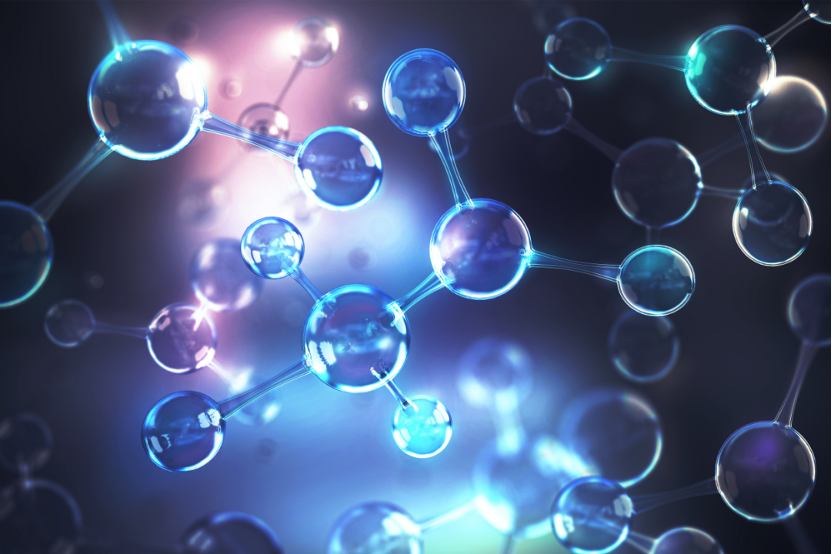
Figure: Hydrogen empowers future energy systems
This concept solves the problem of inverse distribution of energy resources and energy demand in China. Northwest China has an abundance of light and wind resources as well as a large amount of land available for new energy development. However, the water resources are extremely scarce. Energy demand is mainly concentrated in the central and eastern regions of the country, which are also rich in water resources. One option is to directly use new energy to produce hydrogen in the west. However, to produce 1 kilogram of hydrogen, 9 kilograms of water are needed. This is very difficult to ensure in northwest China. If water from the west is used to produce hydrogen, the hydrogen is transported to the central and eastern regions and reduced to water, it is equivalent to sending water from the west to the east, which will worsen the ecology of the west and is unsustainable. This concept solves the problem of water scarcity in the western region, and at the same time enables recycling of water resources at the existing bases after the thermal power plants are decommissioned.
Using the power grid as a new energy distribution carrier involves costs far lower than the transportation cost of hydrogen. When new energy is used to produce hydrogen, the problem of transportation follows. Transporting hydrogen first requires pressurization or liquefaction. However, the liquefaction process consumes more energy and requires 30% of the energy contained in the transported hydrogen, which is equivalent to 7 to 10 kilowatt hours of energy consumed per 1 kilogram of hydrogen transported. Due to the huge temperature difference between cold hydrogen and ambient temperature, there are high requirements for the materials used and the insulation. Generally, the applicable distance for liquid hydrogen transportation should exceed 400 to 1,000 kilometers, and the transportation temperature should be maintained at around minus 253°C. Such transportation conditions will inevitably keep costs high. Another option is to react hydrogen with carbon dioxide to generate methane, which is then transported through pipelines. In fact, the methanation reaction will release a large amount of heat, and adding this conversion process will reduce the overall final energy efficiency. At the same time, the technology also requires a large amount of carbon dioxide as raw material. The economic feasibility and applicability of this approach need to be further demonstrated.
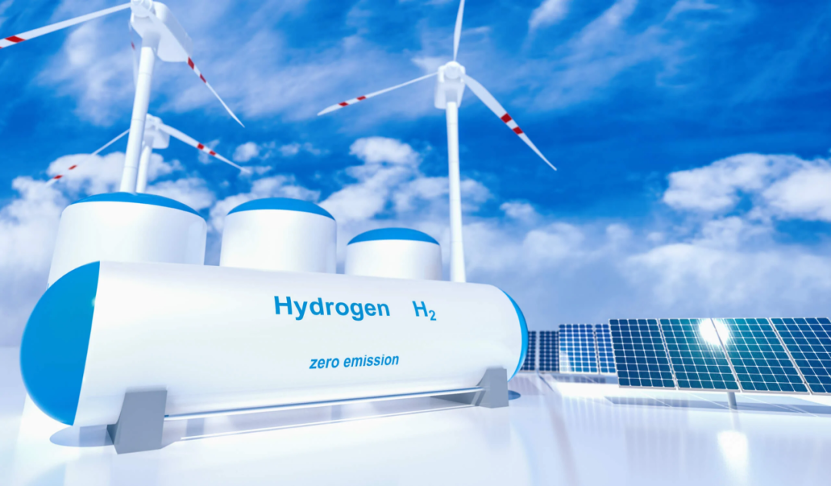
Major breakthroughs in the technology of producing hydrogen with electricity are expected. According to reports, China is studying a kilowatt-level high-temperature electrolysis hydrogen production system. At an electrolysis current density of 0.25 amps per square centimeter, the water vapor conversion rate reaches 70%, the electrical efficiency is 91.9%, and the hydrogen production volume reaches 1.37 cubic meters per hour (under standard conditions), the decay rate is only 2.25% per 1000 hours. The hydrogen production performance of the 5-kilowatt electrolytic cell stack is that the peak power of the electrolytic cell stack is 7.2 kilowatts, the electrolysis current density is 0.5 amps per square centimeter, the peak hydrogen production rate is about 2.3 standard cubic meters, the hydrogen purity exceeds 99.995%, and the energy consumption of the electrolytic cell is about 3.13 kWh per standard cubic meter. It is also reported that new hydrogen production technology has changed the industrial paradigm. The new electrolysis water hydrogen production technology has effectively reduced the cost of existing electrolysis water hydrogen production and achieved large-scale production, thereby achieving a rapid transformation of industrialized preparation of hydrogen energy. This new electrolysis water hydrogen production technology has the following advantages: low cost, in that the cost can be reduced by more than a quarter compared with traditional electrolysis technology; high production capacity, with large-scale, industrialized continuous production effect; pollution-free, as there is no pollution and no greenhouse gas emission in the production process, thus no issues with environmental impact assessment; fewer processes, as compared with the existing production process, the number of processes is reduced by about a third. From a technical perspective, existing thermal power plants can provide a high-voltage hydrogen production environment. Under the action of a strong electric field, hydrogen elements can more easily break away from atomic force, thus greatly improving the efficiency of hydrogen production. Solid oxide (SOEC) electrolysis water technology has a theoretical efficiency of 100% and an actual efficiency above 95%. It can also be combined with cogeneration technology to further improve the utilization rate of electric energy. Utilizing the heat generated by hydrogen power generation and using high voltage to produce hydrogen is expected to improve the efficiency of "using electricity to produce hydrogen and hydrogen to regenerate electricity ", surpassing the efficiency of pumped hydro energy storage at lower costs, achieving a technological revolution of large-scale energy storage.
The concept is economically feasible by "transmitting electricity from the west to the east, producing hydrogen from the east, and regenerating electricity at the appropriate time." Using electricity to produce hydrogen and hydrogen to regenerate electricity" is to transfer the surplus new energy power generation in the western region to the central and eastern regions through transmission lines and produce hydrogen in the east region near the load center, then store it on-site in the form of liquid hydrogen for local utilization. With currently available technologies, if the long-term storage of liquid hydrogen is not considered, the cost of transporting this part of the surplus electric energy to the central and eastern parts of the country is about 0.46 yuan. When long-term storage of liquid hydrogen is considered, the cost of electricity per week and month is approximately 1.05 yuan and 1.16 yuan, respectively. As the utilization rate of west-to-east power transmission lines is greatly improved due to electricity storage, and with the continuous advancement and large-scale application of the technology of "using electricity to produce hydrogen and hydrogen to regenerate electricity", the cost will be significantly reduced. Compared with directly using the surplus new energy in the west to generate hydrogen on site and transporting it to the east via land transportation for power generation, this approach is safe, convenient and offers significant economic advantages.
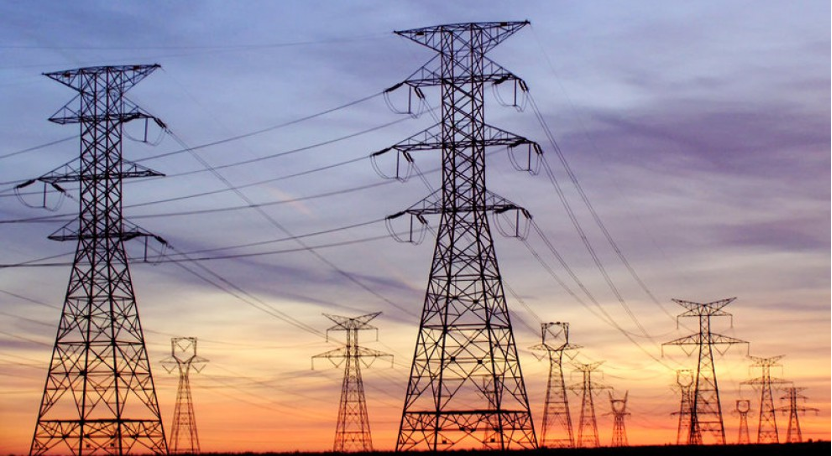
Figure: China has built a mature UHV transmission system
Compared with electrochemical energy storage, the economic and environmental costs of the energy storage method of "using electricity to produce hydrogen and hydrogen to regenerate electricity" are far more competitive. Batteries require a certain amount of nickel, cobalt, and lithium, and the material cost accounts for a high percentage. But from the end of 2016 till the first quarter of 2018, the prices of cobalt and lithium around the world quadrupled and doubled, respectively. This urgently calls for a breakthrough in battery recycling technology, as it would otherwise bring a disaster for the environment. On the other hand, the current energy density of Tesla's batteries and BYD's blade batteries is about 260 kilowatt hours per cubic meter. Due to the extreme imbalance in space and time between new energy power generation and user electricity consumption, the amount of electricity that needs to be stored is far larger than electric vehicles. This means that batteries cannot be relied upon to solve the storage problem of large-scale time and space transfer of electric energy, as the economic and environmental costs are not something that human society can afford. Currently, as the cost of new energy power generation continues to decrease, the cost of green hydrogen has become acceptable in comparison. Since hydrogen energy is stored locally instead of transported over long distances, the associated costs can be greatly reduced. On the other hand, titanium is the preferred electrode material for hydrogen production. The reserves of titanium on the earth are much greater than those of lithium and cobalt, which means a great cost advantage.
The technology of hydrogen power generation is very mature. In the small town of Hannibal, Ohio, USA, General Electric's turbines are designed to use 80% natural gas and 20% hydrogen and are expected to use 100% hydrogen in the future. Hydrogen is the most abundant element in the universe, and when combined with oxygen and burned, it can be used to drive modern gas turbines to generate electricity with near-zero carbon emissions. In 2020, South Korea had a 50-MW hydrogen power station connected to the grid, and Sungrow Power will also have a 500-kW hydrogen power station connected to the grid. When thermal power gradually ceases operation, the existing plant sites can provide sufficient space for hydrogen production, hydrogen storage and hydrogen power generation.
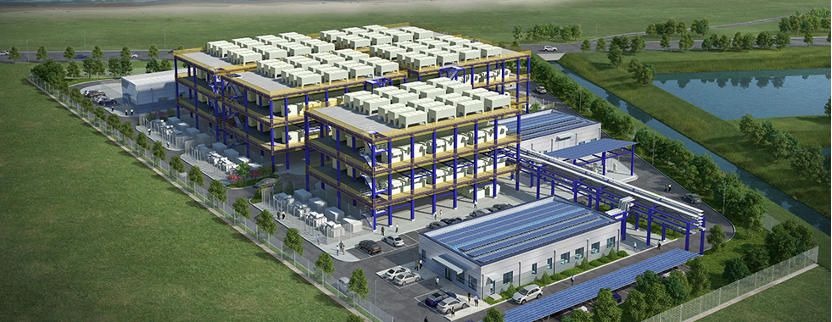
Figure: Hydrogen fuel cell station in South Korea
This concept adopts a large-scale energy storage method of "using electricity to produce hydrogen, and hydrogen to regenerate electricity" in pre-existing thermal power plants. This is the optimal choice for the economical utilization of hydrogen energy and centralized risk management. It not only provides overall security for the new power system, but also avoids safety hazards caused by the dispersed conversion, storage, and utilization of hydrogen energy. If a large amount of hydrogen energy is dispersed and transported across a large area, it may bring great safety risks to the entire society.
This concept will greatly improve the utilization rate of the entire greater-scale power grid lines.The low utilization rate of power grid lines is caused by the users’ power consumption curve. The power grid is planned and constructed according to the principle of meeting the maximum load of users. Therefore, the utilization rate will inevitably decrease during off-peak load periods. If a large amount of electric energy can be stored in the form of hydrogen energy, peak shaving and valley filling of electric power will become possible, thereby improving the utilization of power grid equipment, and greatly improving the utilization of ultra-high voltage lines for power transmission from west to east China. All excess wind power at night in the west can be used for hydrogen production at each base, and the hydrogen can then be used to generate electricity during peak load times during the day.
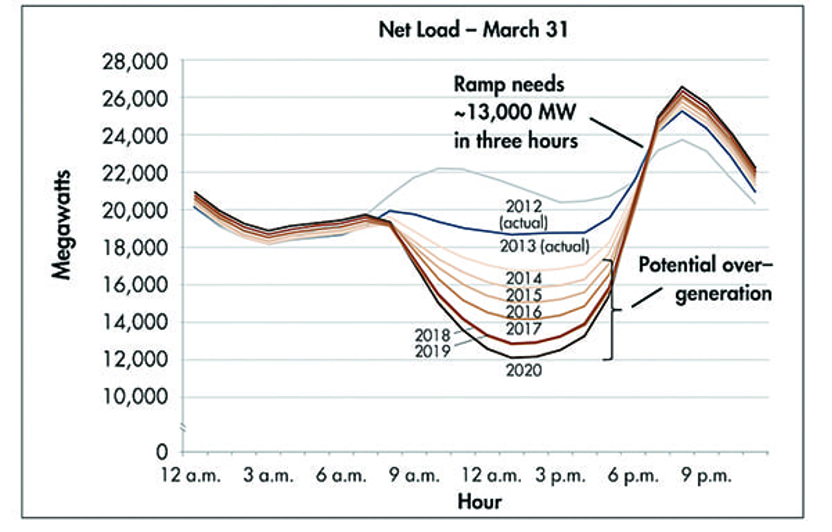
Figure: Duck curve in power systems
This concept solves the problem of thermal power base transformation. Hydrogen generator technology is similar to gas turbines in terms of maturity. The scattering thermal power plants in the existing power system can be used as bases for "using electricity to produce hydrogen and hydrogen to regenerate electricity". The electrical connections between thermal power plants and the power grid, as well as space-land resources, are all reusable resources, making the transformation of thermal power bases economically feasible.
This concept will solve the problems in the dispatching and operation of new energy-dominant electric power systems in the simplest and most economical way. Since the thermal power plant is turned into a hydrogen generator, it can provide voltage support for the load center. The hydrogen generator is rotating and will provide a large number of moments of inertia for the operation of the power grid. Hydrogen power generation can start and stop quickly, which can provide the power grid with a large amount of emergency backup. It can take advantage of off-peak periods, long-distance power transmission, and large amounts of energy storage to avoid long-distance heavy-duty power transmission, thereby improving the overall operational stability of the large power grid.
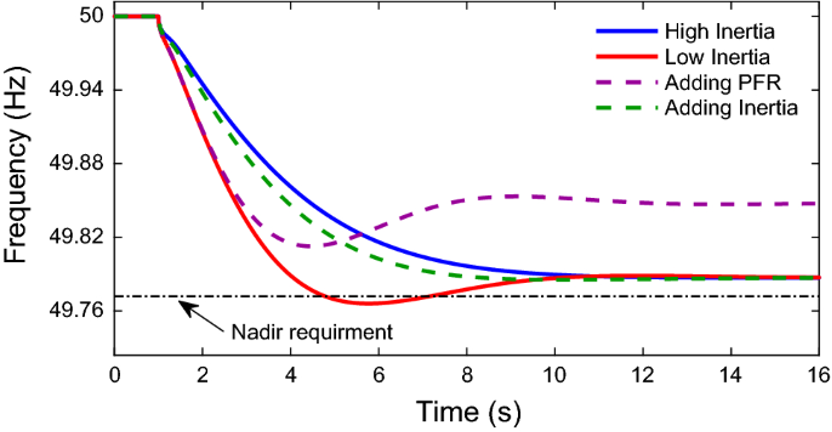
Figure: Moment of inertia requirements in power systems
This concept also supports the development of the hydrogen economy. The green hydrogen envisaged comes from new energy aggregated through the power grid. It not only solves a series of problems such as new energy aggregation, long-distance transmission, utilization of abundant water resources, resource reuse after thermal power retirements, and efficient hydrogen production, but also enables hydrogen production to become the most flexible and friendly load on the power grid, making full use of excess new energy to produce hydrogen, achieving interconnection and mutual benefit between different electric energy sources and hydrogen energy. Wherever hydrogen energy is needed, the power grid will transmit and distribute new energy to the corresponding locations and produce hydrogen locally to meet the local green hydrogen needs. The power grids thus are freed from problems of high transportation environment requirements, high costs, and high safety risks of producing hydrogen in distant places. Through the above feasibility analysis, the physical form of the new power system with new energy as the dominant contributor has gradually become clear. The power grid has a lot of similarities to the Internet in the way that it connects ubiquitous new energy and energy users. This is the concept of energy Internet advocated by Jeremy Rifkin; large-scale energy storage power stations using hydrogen as the carrier will gradually replace thermal power generation units, smooth out the large-scale spatial-temporal imbalance between new energy power generation and user consumption, and greatly improve the utilization rate of power grid equipment; using hydrogen energy generators to provide voltage support and reserve capacity for load center power grids, replacing thermal power units to provide moments of inertia for the greater grid; electrification level of terminal energy will be improved, and natural gas and heating pipelines will be replaced by power grids carrying new energy. The power grid will realize the aggregation, transmission, and distribution of new energy to thousands of homes in an economical, reliable, safe, fast and green way. Hydrogen production can be carried out in locations where green hydrogen is needed in a friendly way of using new energy to generate electricity to meet the demand for hydrogen energy in various industries. After the thermal power units are decommissioned, large-scale hydrogen production, hydrogen storage and hydrogen power generation will be carried out on the pre-existing bases, thus gaining space resources, and a high degree of physical integration with the power grid. It is our hope that this concept will promote the high-quality development of China’s energy transformation.
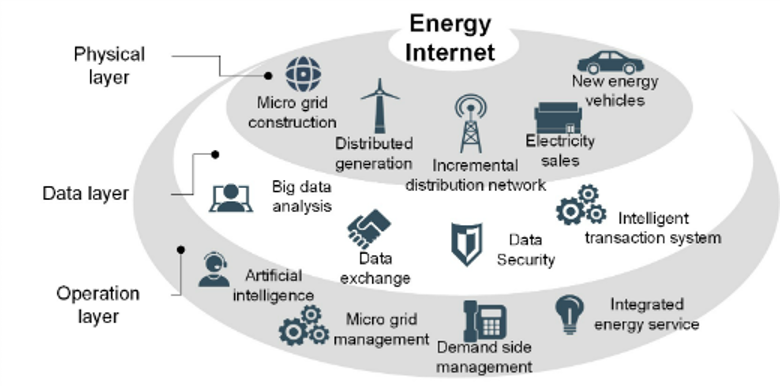
Figure: Energy Internet architecture
Of course, the construction of this concept is still in an early stage. The technology of hydrogen energy discussed takes reference from the research outcomes of industry experts. The implementation of the concept requires a more detailed scientific demonstration. It is our anticipation that the state will mobilize all parties and gather the best resources to carry out research and technological application in this field to develop the core technology of new power systems that will lead the world's energy sector. China has the most advanced high-voltage power transmission technology in the world. If it can be combined with large-scale hydrogen production, hydrogen storage and hydrogen power generation technology, a new power system with new energy as the dominant source can be expected in the near future. And this will help China's "carbon peak and carbon neutral" goals and make great contributions to the sustainable development of mankind.
Authors: Xia Qing, Kang Chongqing, Zhong Haiwang, Chen Qixin, Zhang Ning of the Tsinghua University Energy Internet Think Tank Research Center